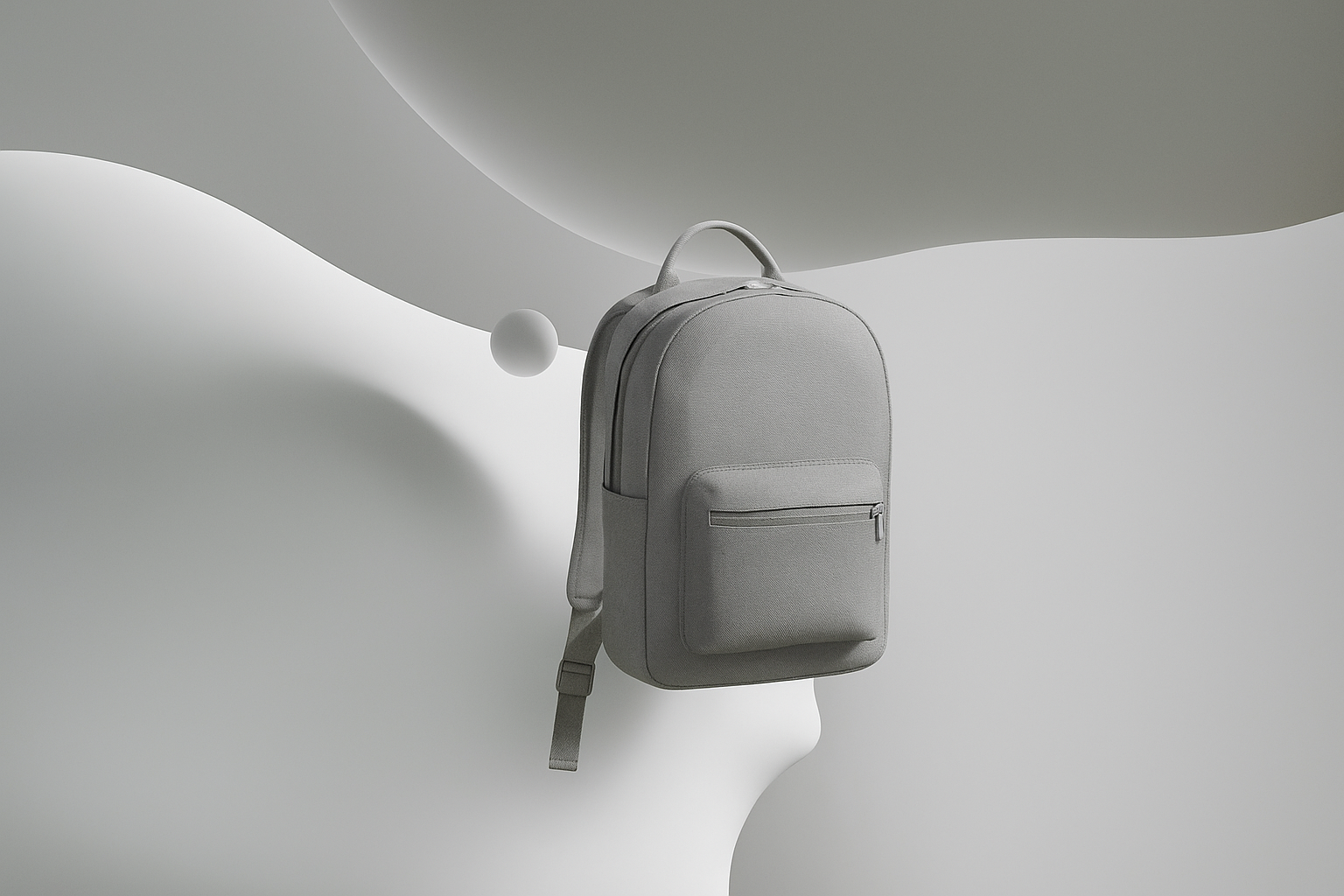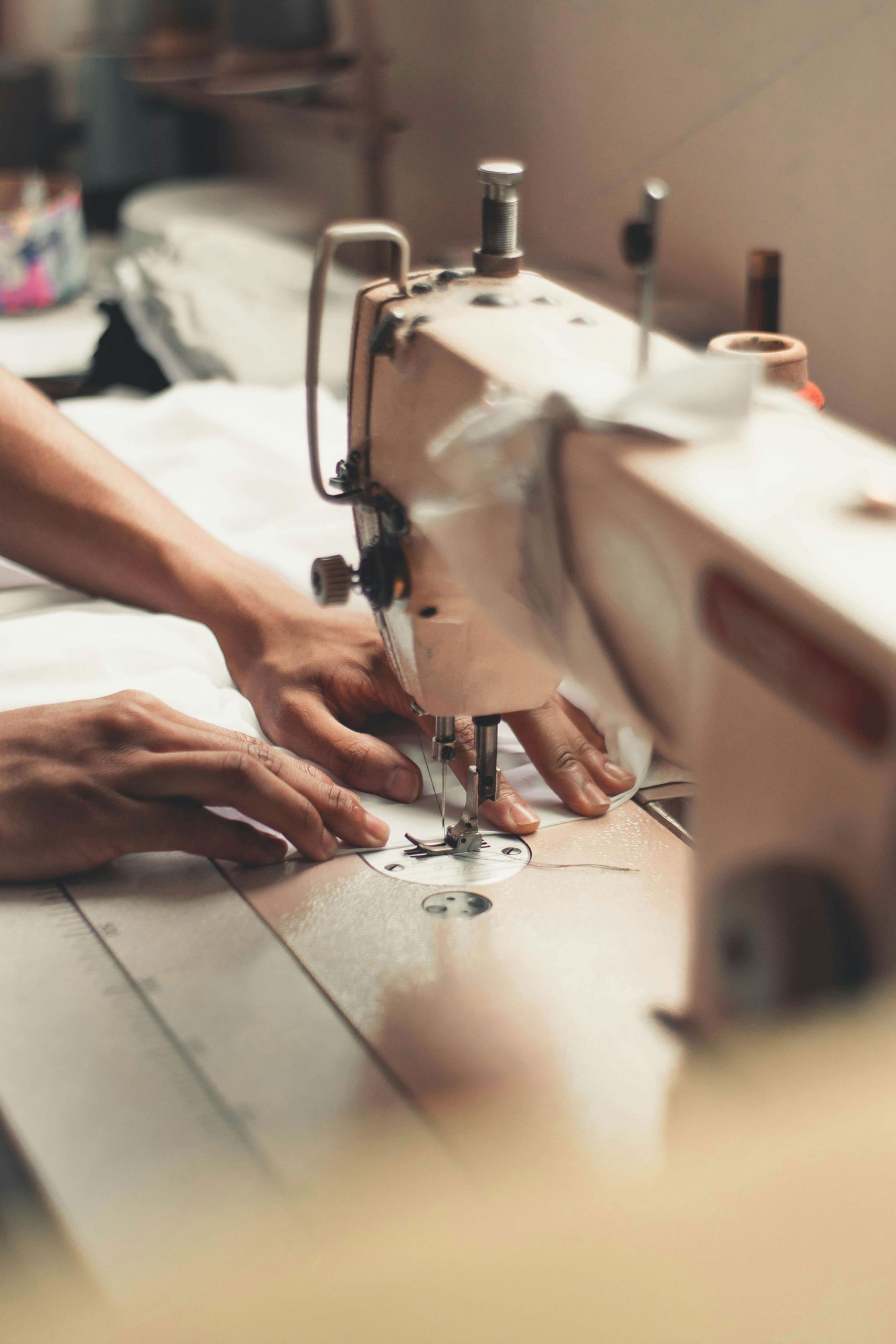Take a stroll in Shibuya or check out the shops in Ginza, and you’ll quickly notice something cool: Japan isn’t just following fashion—it’s quietly making its own. While everyone else is into Italian leather and fancy French brands, Japan’s been changing the bag game with a special Japanese style. They mix old-school skills, fresh stuff, and a crazy focus on the small stuff.
What started as just making useful bags for people in Japan has turned into a big trend that’s hitting everything from streetwear to high-end bags. Japanese bag brands aren’t just making things; they’re showing the world a new way to think about what we carry, how long it lasts, and how good design and being useful go together.
People were rocking outdoor bags with fancy outfits, and simple tote bags looked super stylish because of their shape and cool details. Japan wasn’t trying to beat fancy brands; it was making a whole new kind of fancy.
The Thinking Behind It All
Monozukuri: Making Things the Right Way
The secret to Japan’s bag success is monozukuri. It’s not just about making stuff; it’s about the whole process, from start to finish. It means being proud of your work, trying to make things perfect, and knowing that the little things matter a lot.
This idea changes how Japanese brands design bags. Western brands might think about ads and where their brand fits in, but Japanese companies are all about how smooth the zippers are, how good the stitching is, and how the material will look in years. It’s a totally different focus that you can see in every bag they make.
Kaizen: Always Getting Better
Kaizen, means always trying to improve. Japanese bag brands are always trying to make their bags better. A good bag doesn’t stay the same forever; it gets small upgrades that make it more useful without messing up the original idea.
This leads to bags that look simple but have a lot of smart ideas inside. Everything has a reason, and every detail has been thought about over and over.
The Japanese Brands Leading the Way
Porter: The Street Style Start
Yoshida & Co. started Porter in 1962, and they probably didn’t know they’d be a street style fave for years. Porter’s super strong materials, designs inspired by the military, and crazy good quality have made it a hit with everyone from artists in Tokyo to fashion people in New York.




What makes Porter great:
- Super strong materials made for factories
- Mix-and-match designs that work for different stuff
- Teaming up with fashion brands
- Good prices that make the quality available to younger people
Porter proved that Japanese bags can be useful, stylish, and cool. You can see their impact on tons of brands that now mix work-style design with street fashion.
Price Range: $80-$400
[Explore Porter Collections →]Anello: The Global Hit
Who thought a simple backpack with a wide opening would blow up around the world? Anello went from being a local Japanese brand to a must-have, showing how Japanese design can grab the world’s attention.
The Anello secret:
- Simple design that’s super useful
- Good materials at prices that don’t hurt your wallet
- Colors and patterns that everyone can dig
- Looks great in photos on social media
Anello’s success showed that Japanese innovation isn’t just about high-tech stuff; sometimes, it’s about making the basic things perfect in ways you wouldn’t expect.
Price Range: $30-$80
[Shop Anello Designs →]Briefing: Military Style Meets Fashion
Briefing used military materials and building methods to make bags for everyday use. This created a new style of tough luxury that other brands have copied. They prove that strong and stylish can go together.
Briefing’s innovation:
- Tough nylon made for the military
- Parts from military suppliers
- Designs that mix work and luxury
- Limited releases that create hype
The brand has shown how Japanese companies can use their skills from one area to make a whole new market.
Price Range: $200-$600
[Discover Briefing →]Tumi’s Japanese Influence
Even Western brands have been hit by the Japanese bag craze. Tumi working with Japanese designers and using Japanese building skills shows how ideas go both ways, creating a mix of the best of both worlds.
The Innovation Lab
Material Science Revolution
Japanese bag companies are now leaders in making new materials, creating fabrics that do things people didn’t think were doable. From waterproof fabrics that can still breathe to fake leathers that look great over time, Japanese material science is pushing things forward.
Cool new stuff:
- Super light materials that are still strong
- Waterproof stuff that doesn’t change how the fabric feels
- Fake materials that get a cool look as they age
- Fabrics that handle all kinds of weather
Hardware Engineering
The focus on details goes all the way down to the zippers, buckles, and straps. Japanese brands work with special hardware makers to create parts that work smooth for years, don’t rust, and still look good after being used every day.
Building Skills
Japanese bag making often uses skills from old crafts, but they’re changed for new materials and made for today’s production. This mix of old and new makes bags that have a soul and last a long time, which you don’t get with bags made in huge numbers.
The Cultural Impact
Streetwear
Japan’s impact on streetwear has helped Japanese bag brands get noticed. As Japanese fashion got famous, the bags that young people carried became key parts of street style around the world.
Key moments:
- Porter being used in fashion shows
- Anello blowing up on social media
- Japanese outdoor brands being worn in the city
- Japanese and Western streetwear brands working together
Minimalism
Japan’s love for simple, useful, and well-made things has had a big impact on the global minimalist movement. Japanese bags show these ideas, proving that being simple doesn’t mean you have to give up quality or good design.
Sustainability
Japanese companies focus on making things strong and well, which lines up with people caring more about using less stuff. Their buy it once, use it forever idea connects with people who are tired of fashion that falls apart.
The Technology Side
Smart Features
Japanese brands have been the first to put technology into bags without messing up the design. From chargers to compartments, they’ve shown how tech can make a bag better without taking over.
Making Things Better
Japanese building skills, made perfect over years of making electronics, have been used to make bags, creating a level of accuracy that sets new standards.
Material Technology
The same companies that make materials for cars and electronics have made fabrics and parts for bags, bringing super strong stuff to everyday items.
Global Impact
Western Brands
Big Western bag brands have started using Japanese design ideas:
- Simple looks that are super useful
- Focus on how things are built and the quality of parts
- Working together to bring new ideas
- Limited releases to create a buzz
Korean and Chinese Brands
Other Asian countries have watched and copied Japanese bag styles, making their own versions while adding their own culture.
European Brands
Even fancy European brands have added Japanese ideas, especially in making technical materials and using good building skills, while still keeping their classic style.
The Money Side
Export Success
Japanese bag brands have done great selling around the world, not by being super fancy, but by offering good quality, innovation, and prices that make sense.
Influence on Industry
The success of Japanese brands has changed how things are made, what standards are used, and how designs are made across the industry. Now, many brands use Japanese-inspired ideas.
Cultural Influence
Japanese bag brands have become like ambassadors for Japanese culture, spreading love for Japanese design and how they make things.
The Design Philosophy
Ma: The Power of Space
Ma—the idea of empty space—affects Japanese bag design. What’s not there is just as important as what is, creating designs that feel balanced and clean.
Wabi-Sabi: Beauty in Imperfection
Wabi-sabi is about finding beauty in things that have aged. Japanese bags are made to get cooler as they get older, not just fall apart.
Shibui: Simple Style
Shibui—simple beauty—guides how Japanese bags look. The goal isn’t to be flashy, but to show real beauty over time.
Making Things Great
Focus on Details
Japanese culture is all about making every detail perfect. Stitching has to be perfect, edges have to be done right, and parts have to work smooth. This focus has set new standards for quality around the world.
Quality Control
Japanese quality control is famous, and bag making benefits from these high standards. Products are tested to make sure they’ll last.
Handmade Touches
Even when making bags in large numbers, Japanese companies add handmade touches that add character and quality to each piece.
The Street Style Impact
Harajuku Influence
Harajuku in Tokyo has become a fashion hotspot, and the bags carried there often show what’s coming next. Street style photographers watch Tokyo to see what’s hot.
Useful Fashion
Japanese street style has shown that useful doesn’t have to be boring. Putting useful bags with cool fashion has changed how people think about accessories.
Appeals to everyone
Japanese bag designs have proven that they can work anywhere, whether it’s in Tokyo offices, New York art shows, or London fashion week.
The Future
Sustainable Technology
Japanese companies are leading the way in making sustainable materials and production, creating bags that work great while being good for the environment.
Smarter Bags
Future Japanese bags will fit even better with digital life, adding technology without looking too techy.
Global Teamwork
More teamwork between Japanese brands and partners from other countries promises to create new ideas that mix the best design styles.
What We Can Learn
Design
The Japanese way of designing bags offers lessons for brands everywhere:
- Function should lead design, but design matters too
- Details make a difference
- Quality beats too many features
- Simplicity takes more skill
Manufacturing
Japanese excellence provides a model for quality production:
- Invest in tools and processes
- Test products
- Keep things consistent
- Treat making things as a skill
Culture
Japanese brands are great at adding cultural values to products:
- Being real matters more than fake hype
- Cultural values can make products different
- Being great locally can lead to global success
- Old and new can work together
What Customers Think
Value
People have learned to see the quality in Japanese bags, often picking them over Western brands because they offer more for the money.
Culture
The success of Japanese bags has made people appreciate Japanese design and how they make things.
Higher Standards
Japanese excellence has raised standards, forcing all bag makers to step up.
The Industry Change
Supply Chains
Japanese companies have changed supply chains, encouraging suppliers to use Japanese quality standards.
Design
Many Japanese ideas have become standards, from materials to building methods.
Pressure
The success of Japanese brands has created competition that helps customers, forcing all makers to make better products.
In conclusion
Japan’s impact on the bag industry is more than just good products; it’s a show of how culture, good manufacturing, and design can change industries. While showier brands grab headlines, Japanese companies have quietly changed how the world thinks about bags.
The Japanese way proves that innovation doesn’t always come from new tech. Sometimes it comes from making the basics perfect, paying attention to small things, and keeping standards high.
As people care more about sustainability, Japanese ideas become more important. Focusing on lasting, useful things provides a plan for the future.
The quiet revolution continues, with people working hard to make bags that will set trends. They’re not predicting the future; they’re building it, one stitch at a time.
Japan has shown the world that the best trends aren’t the loudest ones—they’re the ones that make everything better. And in the bag industry, Japan isn’t just setting trends—it’s setting the standard for what great really means.
What Japanese bag innovations have influenced your own style choices? Share your experiences with Japanese bag brands and their impact on global fashion!
Tags: #JapaneseBags #GlobalTrends #BagIndustry #JapaneseDesign #Monozukuri #PorterBags #AnelloBags #JapaneseCraftsmanship #BagInnovation #TokyoFashion #JapaneseQuality #TrendSetter #BagDesign #JapaneseManufacturing #GlobalFashion



